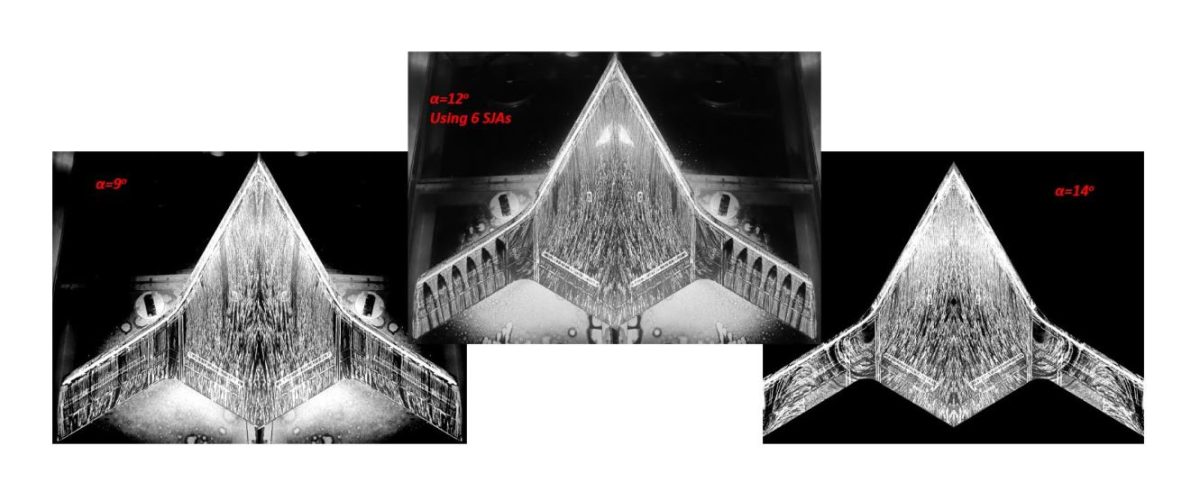The purpose of this study is to explore the replacement of conventional moving control surfaces on a typical tailless aircraft model at high subsonic cruise speeds. Since the efficacy of sweeping jet actuators was only demonstrated at low speeds, the current test considered their potential replacement by Supersonic Steady Jets (SSJs). It was shown that even a single jet properly located and oriented may outperform an array of actuators whose location and orientation did not take into consideration the changing local flow conditions. The test article chosen was the SWIFT model that represents a typical blended wing-body configuration of a tailless aircraft. It was selected because it was tested extensively using Sweeping Jet Actuators (SJAs). When a single supersonic jet designed for Mn=1.5 was used to control thepitch it was able to increase the trimmed lift by approximately a factor of 3. The power it consumed was not necessarily smaller than an array of 6 SJAs but it provided other advantages that are discussed in the paper. Large yawing moments could be provided by other SSJs that were not encumbered by large rolling moments. These tests proved that the momentum input is but one of many parameters controlling the flow. It was replaced by power coefficients that are unambiguously measured and are capable of comparing various modes of actuation.
Prochains évènements
Retour à l'agendaSéminaire Équipe TriboLub
Séminaire + Réunion d'équipe

